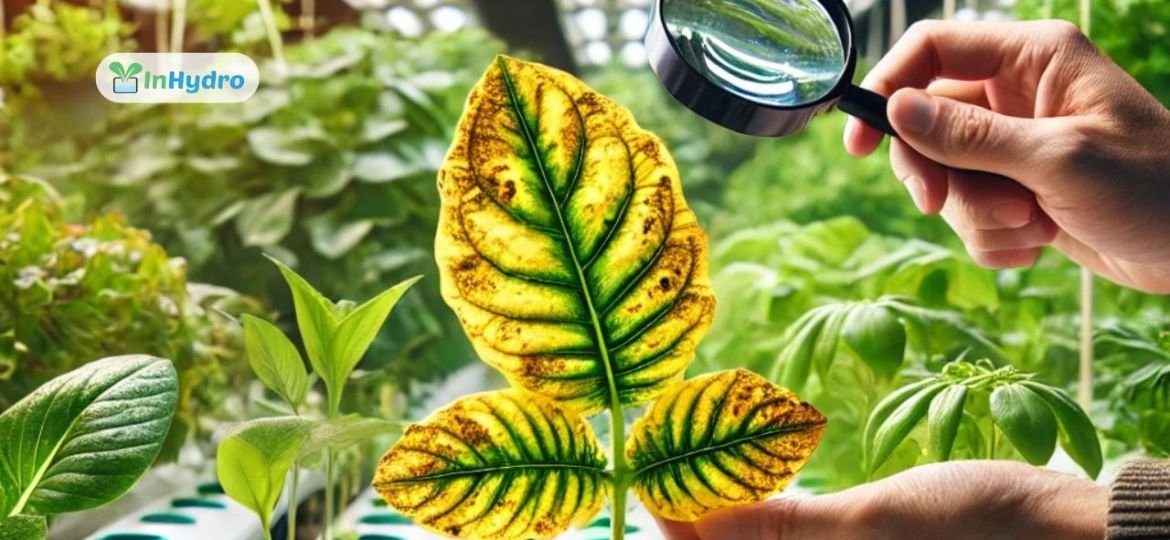
10 Common Hydroponic Plant Diseases and How to Prevent Them
Hydroponic farming eliminates many soil-borne diseases and pests, but plants grown in soilless systems are still susceptible to various fungal, bacterial, and environmental diseases. These issues often arise due to high humidity, stagnant water, poor ventilation, or improper system maintenance.
Understanding common hydroponic plant diseases, their causes, symptoms, and preventive measures can help growers maintain a healthy and productive system. Below is a detailed look at some of the most prevalent hydroponic plant diseases and how to prevent them.
1. Root Rot (Pythium) – The Silent Killer of Hydroponic Plants
Understanding the Disease
Root rot, primarily caused by the Pythium fungus, is one of the most destructive diseases in hydroponic systems. Since hydroponic plants rely on water-based nutrients, roots are constantly submerged, making them highly vulnerable to oxygen deprivation and fungal attacks.
Symptoms to Watch For
- Roots turn brown, slimy, and mushy instead of being white and firm.
- Plants show stunted growth, yellowing leaves, and wilting.
- A foul smell may come from the root zone.
What Causes Root Rot?
- Poor oxygenation of the nutrient solution.
- High temperatures in the water, encouraging fungal growth.
- Stagnant water, which allows pathogens to thrive.
Prevention Strategies
- Ensure constant aeration of the nutrient solution using an air pump and air stones.
- Maintain the water temperature between 18–22°C (64–72°F) to prevent fungal growth.
- Use sterilized growing mediums and clean hydroponic equipment regularly.
- Introduce beneficial microbes like Trichoderma and mycorrhizal fungi to suppress pathogens.
2. Powdery Mildew – The White Dusty Invader
Understanding the Disease
Powdery mildew is a fungal disease that thrives in warm, humid environments with poor airflow. It spreads quickly, covering plant leaves and stems with a white, powdery substance, weakening the plant’s ability to photosynthesize.
Recognizing Symptoms
- White, powdery patches appear on leaves and stems.
- Leaves may become curled, yellow, or brittle.
- Growth slows down, leading to weaker, less productive plants.
Causes of Powdery Mildew
- High humidity (above 60%) and stagnant air.
- Lack of proper ventilation in the grow area.
- Spores from infected plants spreading rapidly through the system.
How to Prevent It?
- Improve air circulation using fans or ventilation systems.
- Maintain humidity below 60% to prevent fungal growth.
- Remove and dispose of infected leaves immediately to stop the spread.
- Spray plants with a natural antifungal solution, such as neem oil or potassium bicarbonate.
3. Botrytis (Gray Mold) – The Rapid Destroyer
Understanding the Disease
Botrytis, commonly known as gray mold, affects fruits, leaves, and stems, causing rapid tissue decay. It spreads quickly in warm, humid conditions, especially when plants are overcrowded or touching each other.
Symptoms to Identify
- Grayish-brown mold appears on leaves and stems.
- Water-soaked lesions develop, leading to decay.
- Plants start wilting despite proper watering.
Why Does It Occur?
- Excess moisture on plant surfaces.
- Overcrowding, leading to poor airflow.
- Lack of ventilation, allowing spores to settle and multiply.
How to Keep It Away?
- Space plants adequately to prevent overcrowding.
- Use dehumidifiers to control moisture levels.
- Prune infected parts and remove dead plant material immediately.
4. Downy Mildew – The Hidden Leaf Killer
What It Is
Unlike powdery mildew, downy mildew appears as yellow or brown spots on the upper side of leaves, while the undersides develop a gray or purple fuzzy coating. It thrives in cool, damp conditions, making indoor hydroponic setups vulnerable.
Key Symptoms
- Leaves develop irregular yellow patches.
- Undersides of leaves show gray or white mold.
- Leaves wilt and fall off prematurely.
Causes
- Cool temperatures combined with high humidity.
- Poor ventilation, creating stagnant air pockets.
- Contaminated water or plant material spreading spores.
Prevention Methods
- Keep humidity below 55% and improve ventilation.
- Use copper-based organic fungicides to protect plants.
- Avoid overhead watering, which encourages fungal spread.
5. Fusarium Wilt – The Slow but Deadly Infection
Understanding the Disease
Fusarium wilt is caused by a fungus that blocks the plant’s vascular system, preventing nutrient and water uptake. It is a slow but devastating disease, often leading to plant death.
Symptoms to Identify
- Leaves turn yellow, curl, and wilt.
- The plant stops growing despite adequate nutrients.
- Brown streaks appear inside stems when cut open.
Causes of Fusarium Wilt
- Contaminated water or tools introducing fungal spores.
- Warm temperatures promoting fungal growth.
- Poor nutrient management, weakening plant immunity.
Best Prevention Practices
- Disinfect hydroponic systems and tools regularly.
- Use disease-resistant plant varieties when available.
- Maintain stable pH and nutrient levels to boost plant immunity.
6. Algae Growth – The Unseen Competitor for Nutrients
Understanding Algae
Algae growth in hydroponic systems competes with plants for nutrients and clogs irrigation lines, reducing water flow. Algae also provide a breeding ground for bacteria and fungi, increasing disease risks.
Signs of Algae Presence
- Green, brown, or black slimy growth in the nutrient tank.
- A foul smell coming from the water.
- Clogged pumps, tubing, or filters reducing efficiency.
What Causes Algae?
- Exposure to light in the nutrient reservoir.
- Poor water circulation, leading to stagnation.
- High temperatures favoring rapid algae growth.
How to Prevent It?
- Cover nutrient tanks with opaque material to block light.
- Use hydrogen peroxide or beneficial bacteria to control growth.
- Clean hydroponic tubes, trays, and reservoirs regularly.
Final Thoughts
Hydroponic farming is a highly efficient and sustainable method of growing food, but plant diseases can quickly spread if not managed properly. The key to successful hydroponic cultivation is prevention through proper system maintenance, environmental control, and early disease detection.
By taking proactive measures such as monitoring humidity, maintaining proper air circulation, sterilizing equipment, and using disease-resistant plants, growers can ensure healthy plants and high yields in their hydroponic systems.

